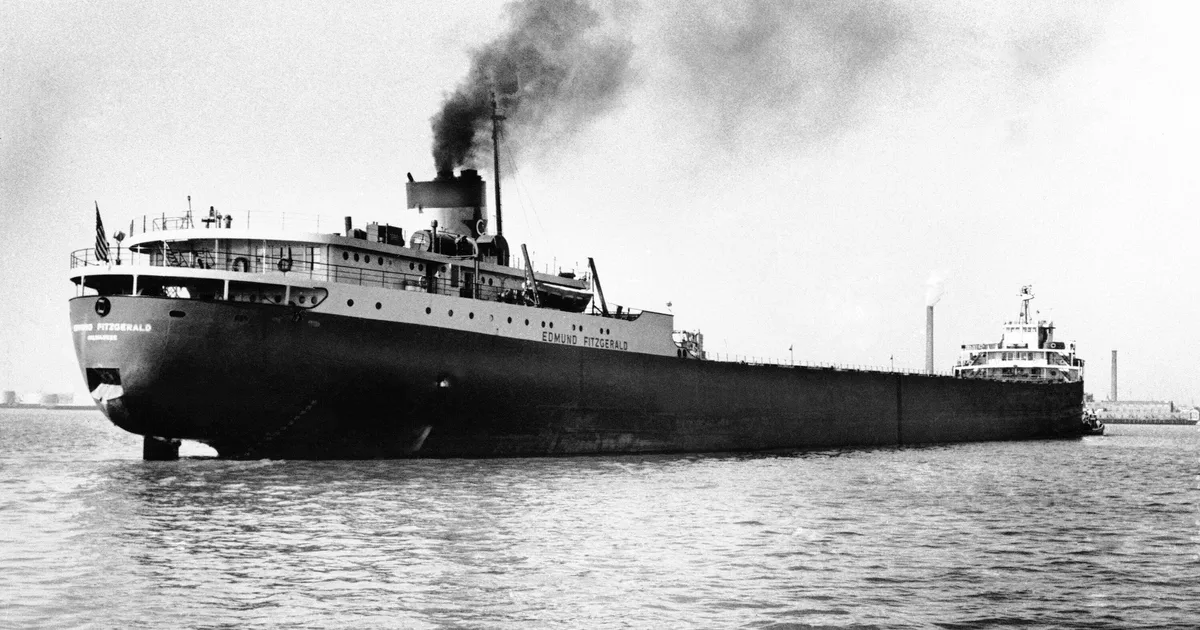Copyright HuffPost

LOADINGERROR LOADING LANSING, Mich. (AP) — Associated Press reporter Harry Atkins was far from Lake Superior on Nov. 10, 1975, “when the gales of November came early.” But his news coverage the following day of the infamous wreck of the Edmund Fitzgerald helped shape its legacy. Atkins, now 86, was a news reporter in Detroit when he was sent to Michigan’s Upper Peninsula to write about the Fitzgerald. The freighter was transporting iron ore from Wisconsin to Zug Island in Detroit when it encountered a terrifying storm. All 29 men aboard died, and the exact cause of the wreck remains a mystery. Advertisement The Fitzgerald was the last major shipwreck on the Great Lakes, thanks to technology improvements in the years after the disaster. The wreck also became the most famous of the region thanks to Gordon Lightfoot’s haunting folk ballad that has kept it in public memory. Lightfoot wrote the ode to the Fitzgerald after reading Atkins’ story about the wreck and a Nov. 24, 1975, article in Newsweek magazine. The song was released less than a year after the disaster in August 1976. Family members and maritime devotees will gather Monday to honor the 50th anniversary of the wreck. Ahead of the anniversary, Atkins recounted what he saw that fateful day in a recent interview with AP, his former employer. Advertisement How did you first hear about the wreck? Atkins, who now resides in Savannah, Georgia, said he was working on the AP Detroit broadcast desk when the bureau heard something was wrong. A Whitefish Bay resident that Atkins described as an “old hermit” was listening to radio communications from ships on the water and called radio stations to relay what he heard. “He could figure out that the Fitzgerald was not doing well,” Atkins said. The last message ever heard from the Fitzgerald was sent to the Arthur Anderson, a vessel nearby. “We are holding our own,” the Fitzgerald’s captain said. Advertisement Atkins said he worked up a quick story about how the ship was in trouble and then drove overnight to Sault Ste. Marie, about 347 miles (559 kilometers) north of Detroit. He set up shop at the Sault Ste. Marie Evening News, a newspaper that had relayed the message from the radio eavesdropper to Detroit. “I got the Yellow Pages,” Atkins said, “and started looking for an airplane.” What did you see over Whitefish Bay? Atkins said he found a retired Navy pilot with a four-seat aircraft “with the wings above the cockpit instead of below,” to fly him and a photographer out over nearby Whitefish Bay. When they arrived at the Canadian side of the lake, Atkins said he could see two freighters, two Coast Guard boats and one other vessel pointed at each other “like the Chrysler star.” “So we had to figure the Fitzgerald’s down there in the middle of where all those boats were pointed,” Atkins recounted. Advertisement From the skies, Atkins said, he saw a lifeboat and vest. But no bodies of the crew were ever recovered. To this day the Fitzgerald remains beneath 535 feet (165 meters) of water, about 17 miles (27 kilometers) north-northwest of Whitefish Point, Michigan. The wreck is protected as a gravesite under Canadian law. Advertisement Once on land, Atkins called his colleagues in Detroit to relay his draft that spread the news. He wrote in his “lede,” the first paragraph of his story: “Rescuers searched Lake Superior’s chilly waters Tuesday for the 29-member crew of the sunken ore-carrier Edmund Fitzgerald but found only an oil slick, empty lifeboats and life jackets.” When did you know the ship had become a legend? Atkins went on to be a longtime sports journalist for the AP in Michigan. He heard Lightfoot’s song from time to time. So,WhatNow? Your SupportFuelsOur Mission Your SupportFuelsOur Mission Join HuffPost The shutdown may be ending, but the story isn’t. A deal’s been struck, but serious questions remain. Your membership powers the reporting that digs deeper and follows what happens next. We remain committed to providing you with the unflinching, fact-based journalism everyone deserves. Thank you again for your support along the way. We’re truly grateful for readers like you! Your initial support helped get us here and bolstered our newsroom, which kept us strong during uncertain times. Now as we continue, we need your help more than ever. We hope you will join us once again. We remain committed to providing you with the unflinching, fact-based journalism everyone deserves. Thank you again for your support along the way. We’re truly grateful for readers like you! Your initial support helped get us here and bolstered our newsroom, which kept us strong during uncertain times. Now as we continue, we need your help more than ever. We hope you will join us once again. Support HuffPost Already a member? Log in to hide these messages. “It’s a haunting ballad,” Atkins said, his voice thick with emotion. “I get choked up every time.” But he didn’t realize just how infamous the disaster was until 25 years later, when he first saw news coverage of the anniversary. Advertisement



![Doctors Discuss if LeBron James’ Sciatica Injury Could Lead to Retirement: 'Let the Ego Take a Backseat Now' [Exclusive]](https://d2731bbzmt3wpb.cloudfront.net/news/image/us-west-2:25d97050-7aa7-43a6-a623-8fb02e6af97e/20251031/21cb2179bc9f4a5386de07cac98a3f71.jpg)